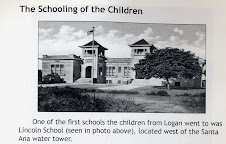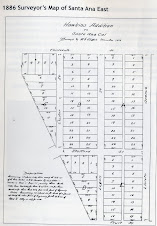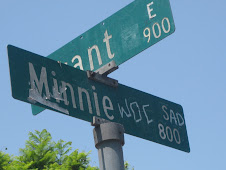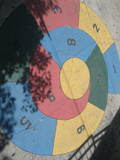

One key asset of the Logan neighborhood is Chepa’s Park, named after a beloved community leader. Nearby, on Washington Avenue, between Logan and Custer Streets, sits La Chiquita Mexican restaurant, which dates back to the 1950s and holds a rich history. Its current owner works to maintain the same ambiance, tradition, and quality food
 that has attracted neighborhood and area residents to La Chiquita throughout the years. Patrons said they feel embraced by the restaurant’s home-like atmosphere. The simple menu features quality, authentic Mexican items, ranging in price from $2 to about $14 each. The majority of items come in at under $7 or $8 – affordable enough for Logan-area residents to be able to eat at the restaurant in their community.
that has attracted neighborhood and area residents to La Chiquita throughout the years. Patrons said they feel embraced by the restaurant’s home-like atmosphere. The simple menu features quality, authentic Mexican items, ranging in price from $2 to about $14 each. The majority of items come in at under $7 or $8 – affordable enough for Logan-area residents to be able to eat at the restaurant in their community.Although Logan is considered a poverty-stricken neighborhood, upkeep and landscaping can vary greatly from home to home. Many displayed well groomed yards and exteriors. Others were ofte
 n seen with dead grass and beer bottles on the lawn, and broken down, dilapidated cars in the driveway,.
n seen with dead grass and beer bottles on the lawn, and broken down, dilapidated cars in the driveway,.At some homes,
 the dri
the dri veway was filled with several cars, and many streets were lined with parked cars. Do Logan residents each own many cars? Or perhaps they fill each house with many people, so they can lower the cost of housing?
veway was filled with several cars, and many streets were lined with parked cars. Do Logan residents each own many cars? Or perhaps they fill each house with many people, so they can lower the cost of housing?Four blocks away, in the Lacy area, St. Joseph Church has served residents of Santa Ana as a place of worship for 129 years. The parish reflects the diversity of the local community: Caucasian, Latino and Samoan. The church also strives to help to build a sense of community, with activities like “Blessing of the Streets,” an annual event in April that began when gang-fighting in the neighborhood claimed the lives of a teenager and a baby. A parish priest walks through the neighborhoods with community members, and blessing each area from temporary altars. Community leaders said the Church has also provided its gated parking lot as a safe place for children to play after school and in the summer.
Battle of the basura (trash)
Non-profit advocates told us that the City of Santa Ana first zoned the Logan area for industrial use, and late
 r for mixed industrial and residential use. Earlier in the neighborhood’s 100-year history, it was one of the only places Latino immigrants were permitted to settle. Today, Logan is
r for mixed industrial and residential use. Earlier in the neighborhood’s 100-year history, it was one of the only places Latino immigrants were permitted to settle. Today, Logan is  home to many industrial businesses, including an auto impound, an air-conditioning company, a cabinet-making company and several contractors. The largest is Ware Disposal, which serves all of Orange County.
home to many industrial businesses, including an auto impound, an air-conditioning company, a cabinet-making company and several contractors. The largest is Ware Disposal, which serves all of Orange County.www.waredisposal.com
Although Ware Disposal implements environmentally friendly approaches in its
 waste management operations, there are still risks to people living in the surrounding neighborhood. For example, it’s very dangerous for children to play in the streets with these large commercial vehicles present. Current regulations limit trucks over three tons to certain roads in the Logan neighborhood. Residents have expressed their concern to the City of Santa Ana about the short and long term environmental impacts of this type of company related to: water, air quality, noise, and soil.
waste management operations, there are still risks to people living in the surrounding neighborhood. For example, it’s very dangerous for children to play in the streets with these large commercial vehicles present. Current regulations limit trucks over three tons to certain roads in the Logan neighborhood. Residents have expressed their concern to the City of Santa Ana about the short and long term environmental impacts of this type of company related to: water, air quality, noise, and soil.An Environmental Checklist for the California Environmental Quality Act (CEQA) compliance was conducted for the redevelopment plan area, which includes the Logan neighborhood. Environmental Factors affected include:
• Air Quality Noise
• Hazards and Hazardous Materials Population and Housing
• Hydrology and Water Quality Recreation
• Land Use and Planning Transportation and Traffic
(City of Santa Ana, Environmental Checklist and Responses, 2006).
Educational resources
The Sant
 a Ana Unified School District offers early childhood education at five federally funded Head Start programs and two state-funded preschools – however, none are within walking distance of the Logan neighborhood. Elementary schools include St. Joseph, a private school, and two public schools, Davis and Garfield, that provide free and reduced-cost breakfast and lunch programs to income-eligible families.
a Ana Unified School District offers early childhood education at five federally funded Head Start programs and two state-funded preschools – however, none are within walking distance of the Logan neighborhood. Elementary schools include St. Joseph, a private school, and two public schools, Davis and Garfield, that provide free and reduced-cost breakfast and lunch programs to income-eligible families.After-school programs provide a safe environment where students can complete their homework and enjoy recreational activities with their friends. Academically low-performing students are eligible for free tutoring at the public schools, part of the federal No Child Left Behind Act. Both Davis and Garfield Elementary also offer support to families who don’t speak English. Parents can get involved in a school advisory committee that offers resources to students who are English language learners. The school district also offers English classes for parents.
http://www.sausd.k12.ca.us/sausd/site/default.asp
http://www.sausd.us/garfield/site/default.asp
http://www.sausd.us/davis/site/default.asp
http://www.stjoesa.org/
For that feeling of nostalgia
On Washington Street there’s a house that, from the outside, looks like any other private residence in the neighborhood. At one time, it was the family home of a man who now runs a very successful company in Corona Del Mar. Though his business is based out of another city, he keeps the Logan home for nostalgic reasons, using it as his personal office to keep it in the family. It’s a small home, with open areas and a room filled with pictures that chronicle his jo
 urney in building the company. This home-office conversion demonstrates that, although the Logan Barrio has endured many ups and down, the people of this community have formed strong bonds of attachment to this place as “home.” It’s a sentiment that can stay with them throughout their lives.
urney in building the company. This home-office conversion demonstrates that, although the Logan Barrio has endured many ups and down, the people of this community have formed strong bonds of attachment to this place as “home.” It’s a sentiment that can stay with them throughout their lives.Weighing the risk
Although there are no apparent signs of homelessness in this barrio, it’s clear that the risk of vagrancy is present in Logan. The neighborhood’s many industrial businesses occupy what could be residential sp
 ace, while offering no services that can benefit the community. Some of these businesses, like the bus yard and the refuse dump, also pose health risks because of the industrial pollution they emit. The many boarded-up homes in Logan can become magnets for criminal behavior or juvenile delinquency, and even crimes against children. The abandoned home right next to Chepa’s Park is a perfect example of how close this risk can be to Logan-area children left alone to play at the park. Even the landmark La Chiquita market – already held up here as an asset to the
ace, while offering no services that can benefit the community. Some of these businesses, like the bus yard and the refuse dump, also pose health risks because of the industrial pollution they emit. The many boarded-up homes in Logan can become magnets for criminal behavior or juvenile delinquency, and even crimes against children. The abandoned home right next to Chepa’s Park is a perfect example of how close this risk can be to Logan-area children left alone to play at the park. Even the landmark La Chiquita market – already held up here as an asset to thecommun
 ity -- poses a measure of risk because of its dual role as Logan’s neighborhood liquor store. People often congregate on the street corner outside La Chiquita and can interfere with the peace, contradicting the vision of safety and good neighbors that the Logan community holds on to.
ity -- poses a measure of risk because of its dual role as Logan’s neighborhood liquor store. People often congregate on the street corner outside La Chiquita and can interfere with the peace, contradicting the vision of safety and good neighbors that the Logan community holds on to.
















